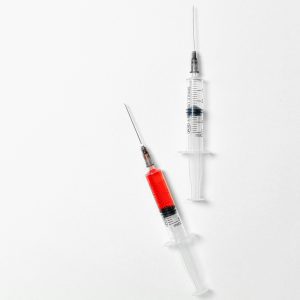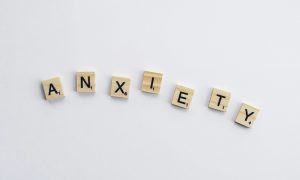
- What Is Panic Attack?
- Brief History of Panic Attack
- What Causes Panic Attack?
- What Are the Symptoms of Panic Attack?
- How is Panic Attack Diagnosed?
- What Are the Different Types of Panic Attack?
- How is Panic Attack Treated?
- Can Panic Attack be Prevented?
- Is Panic Attack Life-Threatening?
- Websites and Articles to Delve into the Aspects of Panic Attack
- Summary
What Is Panic Attack?
A panic attack is a sudden and intense episode of overwhelming anxiety and fear that manifests both emotionally and physically. These attacks can be debilitating, often striking without warning and peaking within minutes. Common symptoms include a rapid heartbeat, chest pain, shortness of breath, trembling, sweating, dizziness, and a sense of impending doom or loss of control. Individuals experiencing a panic attack may also feel disconnected from reality.
The exact cause of panic attacks is complex and can involve a combination of genetic, biological, and environmental factors. Stressful life events, a family history of panic disorders, or a predisposition to anxiety may contribute.
Panic attacks are a hallmark feature of panic disorder, a type of anxiety disorder. However, they can also occur in individuals without a diagnosed disorder. Treatment options often include psychotherapy, cognitive-behavioral therapy (CBT), and medications to manage symptoms and address underlying causes. Understanding and recognizing the signs of panic attacks is crucial for seeking timely support and intervention, facilitating effective coping strategies, and improving overall mental health.
Brief History of Panic Attack
The recognition and understanding of panic attacks have evolved over time within the context of mental health and psychology. While the term “panic attack” itself is relatively modern, historical accounts describe symptoms resembling panic attacks under different labels.
In the late 19th and early 20th centuries, physicians and psychologists began documenting cases of sudden and intense anxiety episodes. Freudian psychoanalysts, such as Sigmund Freud, explored concepts related to anxiety and neurosis during this period.
The formal recognition of panic disorder, characterized by recurrent and unexpected panic attacks, emerged in the latter half of the 20th century. The Diagnostic and Statistical Manual of Mental Disorders (DSM), published by the American Psychiatric Association, first included panic disorder in its third edition in 1980.
Advancements in psychological research and diagnostic criteria refined the understanding of panic attacks and related disorders. The development of effective therapeutic approaches, including cognitive-behavioral therapy (CBT) and medications, has since provided individuals with tools to manage and alleviate symptoms.
Today, panic attacks are recognized as a common symptom not only in panic disorder but also in other anxiety disorders. Increased awareness and understanding have contributed to improved diagnosis, treatment options, and reduced stigma surrounding mental health issues. Ongoing research continues to enhance our comprehension of panic attacks and refine therapeutic interventions.
| Time Period | Key Developments in Understanding Panic Attacks |
|---|---|
| Late 19th to Early 20th Century | Physicians and psychologists document cases resembling panic attacks. Freudian psychoanalysts explore anxiety and neurosis. |
| Mid-20th Century | Formal recognition of panic disorder emerges, characterized by recurrent and unexpected panic attacks. Introduction of panic disorder in the DSM-III (1980). |
| Late 20th Century to Present | Advancements in psychological research refine the understanding of panic attacks and related disorders. Development of effective therapeutic approaches, including cognitive-behavioral therapy (CBT) and medications. Increased awareness reduces stigma surrounding mental health issues. Ongoing research continues to enhance comprehension and refine interventions. |
What Causes Panic Attack?
The exact cause of panic attacks is complex and can involve a combination of genetic, biological, psychological, and environmental factors. While the specific triggers can vary from person to person, some common contributors to panic attacks include:
- Genetics:
- A family history of panic attacks or panic disorder may increase an individual’s susceptibility. Genetic factors can play a role in predisposing someone to anxiety-related conditions.
- Brain Chemistry:
- Imbalances in neurotransmitters, such as serotonin and norepinephrine, which regulate mood and stress responses, may contribute to the onset of panic attacks.
- Stressful Life Events:
- Major life changes, trauma, or chronic stress can act as triggers for panic attacks. Difficult experiences may contribute to heightened anxiety levels.
- Biological Factors:
- Certain medical conditions, such as thyroid disorders or hypoglycemia, can mimic the symptoms of a panic attack. Substance withdrawal or misuse can also be a factor.
- Personality Factors:
- Individuals with certain personality traits, such as a tendency to be more anxious or sensitive, may be more prone to experiencing panic attacks.
- Phobias or Specific Triggers:
- Some individuals may experience panic attacks in response to specific situations, places, or objects, leading to the development of phobias.
- Cognitive Factors:
- Distorted thought patterns and catastrophic thinking can contribute to the intensity and frequency of panic attacks. Negative interpretation of bodily sensations may also play a role.
Understanding the multifaceted nature of panic attacks allows for more comprehensive treatment approaches. Psychotherapy, particularly cognitive-behavioral therapy (CBT), medications, and lifestyle changes are common strategies to manage and alleviate symptoms. It’s important for individuals experiencing panic attacks to seek professional help to identify specific triggers and develop effective coping mechanisms.
What Are the Symptoms of Panic Attack?
Panic attacks are characterized by a sudden onset of intense fear and anxiety, accompanied by various physical and psychological symptoms. These symptoms typically peak within a few minutes and can be overwhelming. Common signs and symptoms of a panic attack include:
- Rapid Heartbeat:
- A pounding or racing heart is a common physical manifestation during a panic attack.
- Chest Discomfort:
- Individuals may experience chest pain or discomfort, often described as tightness or pressure.
- Shortness of Breath:
- Feeling unable to breathe properly or experiencing rapid, shallow breathing is a frequent symptom.
- Dizziness or Lightheadedness:
- A sensation of being lightheaded or dizzy may occur during a panic attack.
- Trembling or Shaking:
- Involuntary shaking or trembling of the body, hands, or limbs can be part of the experience.
- Sweating:
- Profuse sweating, even if the environment is not warm, is a common response to panic attacks.
- Nausea or Upset Stomach:
- Some individuals may feel nauseous or experience stomach discomfort.
- Chills or Hot Flashes:
- Sudden changes in body temperature, such as chills or hot flashes, can occur.
- Feeling of Unreality:
- A sense of detachment from oneself or feeling like things are not real (depersonalization) can happen.
- Fear of Losing Control:
- Individuals may feel a strong fear of losing control or going crazy.
- Fear of Death:
- There might be an intense fear of dying during a panic attack.
- Numbness or Tingling:
- Sensations of numbness or tingling, often in the extremities, may be present.
It’s important to note that not everyone experiencing a panic attack will exhibit all these symptoms. The combination and intensity of symptoms can vary from person to person. Additionally, panic attacks can occur unexpectedly or in response to specific triggers, leading to the development of panic disorder or other anxiety-related conditions. Seeking professional help is crucial for an accurate diagnosis and appropriate management of panic attacks.
How is Panic Attack Diagnosed?
Diagnosing a panic attack typically involves a thorough evaluation by a healthcare professional, often a mental health provider or primary care physician. The diagnostic process includes:
- Clinical Assessment:
- The healthcare provider will conduct a comprehensive clinical assessment, including a detailed discussion of the individual’s symptoms, medical history, and any potential triggers or stressors.
- Physical Examination:
- A physical examination may be performed to rule out any underlying medical conditions that could be contributing to the symptoms. This may involve checking vital signs, such as heart rate and blood pressure.
- Laboratory Tests:
- Blood tests or other laboratory tests may be ordered to rule out medical conditions that could mimic the symptoms of a panic attack, such as thyroid disorders or hypoglycemia.
- Psychological Evaluation:
- The healthcare provider may perform a psychological evaluation to assess the individual’s mental health, including the presence of anxiety disorders or other psychiatric conditions.
- Diagnostic Criteria:
- The diagnostic criteria outlined in the Diagnostic and Statistical Manual of Mental Disorders (DSM-5), published by the American Psychiatric Association, are often used to determine if an individual meets the criteria for panic disorder. This includes the occurrence of recurrent unexpected panic attacks and the persistent concern about having additional attacks.
- Differential Diagnosis:
- The healthcare provider will consider other conditions that may present with similar symptoms, such as specific phobias, social anxiety disorder, or post-traumatic stress disorder (PTSD).
- Collaboration with Specialists:
- In some cases, the healthcare provider may collaborate with mental health specialists, such as psychologists or psychiatrists, for a more in-depth evaluation and to explore treatment options.
It’s essential for individuals experiencing symptoms of panic attacks to seek professional help. A thorough assessment can lead to an accurate diagnosis and the development of an appropriate treatment plan, which may include psychotherapy, medication, and lifestyle modifications. Early intervention is crucial for effective management and improved quality of life.
What Are the Different Types of Panic Attack?
Panic attacks are generally classified into two main types based on the presence or absence of a specific trigger:
- Unexpected (Uncued) Panic Attacks:
- These occur without an obvious trigger or warning. The person may experience a sudden onset of intense fear or discomfort seemingly out of the blue.
- Unexpected panic attacks are a hallmark feature of panic disorder, a type of anxiety disorder characterized by recurrent, unexpected panic attacks.
- Expected (Cued) Panic Attacks:
- These are associated with specific triggers or situations. The person anticipates a panic attack in response to certain stimuli, such as a phobia or exposure to a traumatic event.
- Expected panic attacks are often part of other anxiety disorders, such as specific phobias or post-traumatic stress disorder (PTSD).
Panic attacks can also be categorized based on their frequency and duration:
- Isolated Panic Attacks:
- Occur infrequently and are not associated with a consistent pattern. Individuals experiencing isolated panic attacks may not meet the criteria for panic disorder.
- Panic Disorder:
- Involves recurrent, unexpected panic attacks along with persistent concerns about having additional attacks and worry about the implications or consequences of the attacks.
- Panic disorder is a specific type of anxiety disorder and is diagnosed based on criteria outlined in the Diagnostic and Statistical Manual of Mental Disorders (DSM-5).
Understanding the type and context of panic attacks is crucial for accurate diagnosis and effective treatment. A mental health professional can assess the individual’s symptoms, determine the appropriate diagnostic category, and develop a tailored treatment plan to address the specific challenges associated with panic attacks.
How is Panic Attack Treated?
Treatment for panic attacks typically involves a combination of therapeutic approaches, lifestyle modifications, and, in some cases, medication. The goal is to alleviate symptoms, reduce the frequency and intensity of panic attacks, and improve overall mental well-being. Treatment options include:
- Psychotherapy:
- Cognitive-Behavioral Therapy (CBT): CBT is a widely used and effective therapeutic approach for panic attacks. It helps individuals identify and change negative thought patterns and behaviors associated with anxiety. Exposure therapy, a component of CBT, may be used to gradually confront and overcome specific fears or triggers.
- Psychodynamic Psychotherapy: This form of therapy explores unconscious thoughts and emotions that may contribute to panic attacks, aiming for a deeper understanding and resolution of underlying issues.
- Medications:
- Antidepressants: Selective serotonin reuptake inhibitors (SSRIs) and serotonin-norepinephrine reuptake inhibitors (SNRIs) are commonly prescribed to manage panic attacks. These medications help regulate neurotransmitters in the brain.
- Benzodiazepines: These medications may be prescribed for short-term relief of severe anxiety symptoms. However, they are generally used cautiously due to the risk of dependence and withdrawal.
- Relaxation Techniques:
- Techniques such as deep breathing, progressive muscle relaxation, and mindfulness meditation can help individuals manage anxiety and reduce the physical symptoms associated with panic attacks.
- Lifestyle Modifications:
- Adopting a healthy lifestyle, including regular exercise, sufficient sleep, and a balanced diet, can contribute to overall well-being and help manage stress.
- Education and Support:
- Understanding panic attacks and learning coping strategies are essential. Support groups and education about anxiety management can provide valuable insights and encouragement.
- Stress Management:
- Identifying and managing stressors in daily life is crucial. Stress management techniques, such as time management and setting realistic goals, can be beneficial.
- Regular Follow-Up:
- Regular follow-up with a mental health professional allows for ongoing assessment, adjustment of treatment plans, and addressing any emerging concerns.
It’s important to note that the most effective treatment plan varies from person to person, and individualized approaches are often necessary. Seeking professional help early, maintaining open communication with healthcare providers, and actively participating in the treatment process can significantly improve outcomes for individuals experiencing panic attacks.
Can Panic Attack be Prevented?
While it may not be possible to prevent panic attacks entirely, certain strategies can help reduce the likelihood of their occurrence and mitigate their impact. Here are some preventive measures:
- Stress Management:
- Adopt stress-reduction techniques such as deep breathing, meditation, and progressive muscle relaxation to manage overall stress levels.
- Regular Exercise:
- Engage in regular physical activity, which has been shown to reduce anxiety and stress. Aim for at least 150 minutes of moderate-intensity aerobic exercise per week.
- Healthy Lifestyle:
- Maintain a balanced and nutritious diet, prioritize sufficient sleep, and avoid excessive consumption of caffeine, alcohol, and nicotine, as these can contribute to anxiety.
- Cognitive-Behavioral Techniques:
- Learn and practice cognitive-behavioral techniques that can help identify and challenge negative thought patterns associated with anxiety.
- Mindfulness and Relaxation:
- Incorporate mindfulness and relaxation exercises into daily routines to promote a sense of calm and reduce anxiety.
- Identify Triggers:
- Work with a mental health professional to identify specific triggers for panic attacks. Once identified, strategies can be developed to manage or avoid these triggers.
- Medication Adherence:
- If prescribed medication, adhere to the recommended treatment plan. Follow up with healthcare providers regularly to assess the effectiveness of the medication and make any necessary adjustments.
- Psychoeducation:
- Gain a thorough understanding of panic attacks and anxiety. Education about the condition can empower individuals to recognize early warning signs and employ coping strategies.
- Regular Checkups:
- Attend regular checkups with healthcare providers for ongoing monitoring and adjustment of treatment plans as needed.
- Support Systems:
- Build a strong support network of friends, family, or support groups. Having someone to talk to and share experiences with can be invaluable.
While these strategies can be helpful, it’s important to recognize that everyone’s experience with panic attacks is unique. For those with a history of panic attacks or an anxiety disorder, seeking professional guidance is essential for developing an individualized prevention plan. Early intervention and proactive management can contribute to a better quality of life and a reduced impact of panic attacks.
Is Panic Attack Life-Threatening?
While panic attacks are not inherently life-threatening, they can have significant implications for an individual’s well-being, especially if they occur frequently or are associated with an underlying anxiety disorder. The impact of panic attacks may include:
- Impaired Quality of Life:
- Recurrent panic attacks can lead to a decreased quality of life, affecting daily activities, relationships, and overall functioning.
- Avoidance Behavior:
- Individuals may develop avoidance behaviors, avoiding situations or places they associate with the onset of panic attacks. This avoidance can limit one’s experiences and opportunities.
- Secondary Health Effects:
- Prolonged or frequent panic attacks can contribute to stress-related health issues, such as headaches, digestive problems, and fatigue.
- Risk of Other Mental Health Conditions:
- If left untreated, panic attacks may contribute to the development or exacerbation of other mental health conditions, including depression or substance abuse.
It’s essential for individuals experiencing panic attacks to seek professional help. While the attacks themselves are not life-threatening, understanding and addressing the underlying anxiety or panic disorder is crucial for long-term mental health. If someone is unsure about the nature of their symptoms or is experiencing severe distress, they should seek immediate medical attention to rule out any potential medical issues and receive appropriate support.
Websites and Articles to Delve into the Aspects of Panic Attack
These websites offer valuable insights into panic attacks and panic disorder, providing comprehensive information on symptoms, causes, and treatment options, with a focus on promoting understanding and coping strategies for individuals experiencing these conditions.
- Better Health Victoria:
- Better Health Victoria provides information on panic attacks, their symptoms, and strategies for managing them.
- Mayo Clinic:
- Mayo Clinic offers a comprehensive overview of panic attacks, including symptoms, causes, and treatment options.
- NHS (National Health Service):
- NHS covers panic disorder, its symptoms, causes, and available treatments, emphasizing the role of cognitive-behavioral therapy (CBT).
- Cleveland Clinic:
- Cleveland Clinic provides information on panic attacks and panic disorder, their symptoms, and available treatments.
- Mind:
- Mind discusses panic attacks and panic disorder, offering insights into symptoms, causes, and coping strategies.
- Wikipedia:
- Wikipedia general information on panic attacks, their features, and potential treatments.
- WebMD:
- WebMD describes symptoms of panic attacks and offers insights into their causes and management.
- National Institute of Mental Health (NIMH):
- NIMH provides a publication on panic disorder, covering symptoms, risk factors, and treatment options.
- HelpGuide:
- HelpGuide Offers information on panic attacks and panic disorders, focusing on symptoms, causes, and coping strategies.
- Medical News Today:
- Medical News Today provides information on panic attacks, including symptoms, causes, and potential triggers.
- HealthDirect Australia:
- HealthDirect covers panic attacks and panic disorder, with information on symptoms and available treatments.
- Health Service Executive (HSE) Ireland:
- HSE offers information on panic attacks, their symptoms, and suggestions for managing and preventing them.
These resources provide a comprehensive understanding of panic attacks and panic disorder, covering symptoms, causes, and various treatment options. Always consult with healthcare professionals for personalized advice and guidance.
Summary
A panic attack is a sudden episode of intense fear and anxiety, marked by overwhelming physical and emotional symptoms. Common manifestations include a rapid heartbeat, chest pain, shortness of breath, trembling, sweating, and a profound sense of impending doom. These attacks may occur unexpectedly or be triggered by specific situations or phobias. During an episode, individuals may experience derealization or depersonalization, feeling detached from reality. Although panic attacks are generally not life-threatening, their impact can significantly affect an individual’s quality of life, leading to avoidance behaviors and heightened stress.
Effective management often involves psychotherapy, such as cognitive-behavioral therapy, medication, and lifestyle adjustments. Seeking professional help is crucial for accurate diagnosis and the development of tailored treatment plans to address the unique challenges associated with panic attacks.






